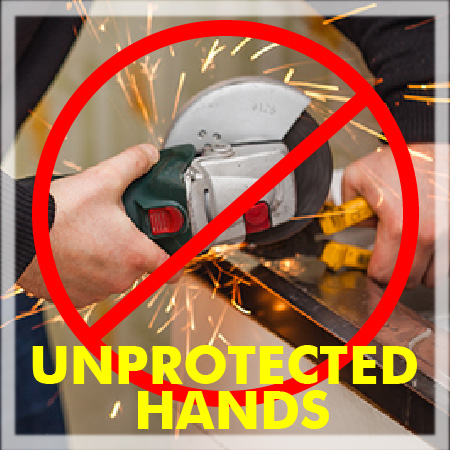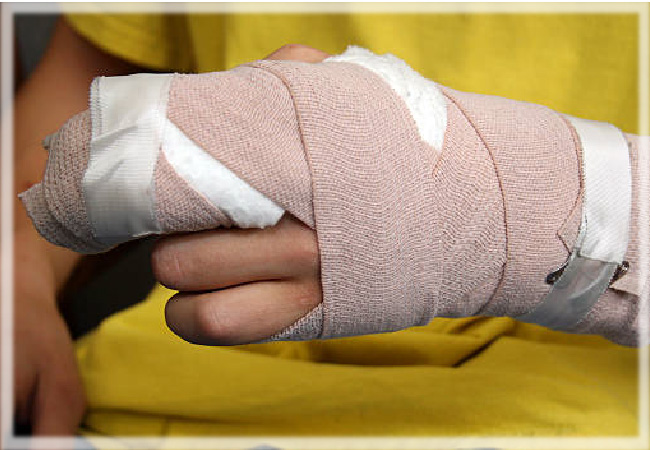Currency
June 21, 2018

Regular laceration injuries in the workplace continue to make a compelling claim for adequate cut protection. In 2016, the Bureau of Labor Statistics showed cuts, lacerations and punctures were a leading cause of days away from work due to injury1. Those injuries come at a personal and professional cost – not only is a worker’s career and well-being put in jeopardy, but companies spend thousands of dollars per injury in lost work time, compensation and medical care. No surprises here – cut injuries are dangerous and as prevalent as ever.
There is also an equally-as-dangerous risk which may be quite surprising to safety managers is the rise of daily chemical interaction for workers. U.S. chemistry production volume is expected to increase by 3.7 percent in 2018, according to the American Chemistry Council. For every one job created from the business of chemistry, 6.8 jobs are created in other sectors2. Chemical interactions are increasingly regular among the industrial workforce, which means personal protection equipment must often stand up to chemical and cut risks alike.
The cut/chemical multi-hazard risk is more typical than many might think, as it affects industries including automotive, food, machinery, metal fabrication, oil and gas and waste. The need for personal protective equipment that doubles up on protection is no longer a nice-to-have, but is becoming a necessity. This causes one to ask, are available protection solutions – not to mention worker safety habits – aligned with that need?
A standard practice for workers who multi-task or face various hazards is to wear multiple forms of hand protection. For example, a worker may don a lightweight cut protective glove under a heavier chemical glove to ensure they’re protected.
While the idea may make sense in theory, this practice is often ineffective and potentially dangerous. Workers who double don can lose tactility to manage small parts, grip to manage oily or slippery items or dexterity to handle the task at hand. Double donning often lessens the performance benefits of each individual glove, rendering each less effective. Additionally, double donning drastically decreases worker comfort.
Equally as unsafe, workers may become dissatisfied with the uncomfortable nature of double gloving and choose to wear only the glove that protects against what they feel is their biggest risk.
For example, a chemical plant worker may choose to only wear a heavy-duty nitrile glove when their primary task is transferring chemicals to and from work stations – however, they are then completely unprotected from sharp machinery at said work stations.
As workforces become increasingly geared toward multi-task requirements, PPE practices and available hand protection must also change.
As workers continue to demand versatile types of protection and benefits from their PPE, glove design must improve.

New innovations and product design are now making some cut and chemical combination glove options a reality.
Multi-risk gloves meet the need to alternate tasks throughout the day without having to change gloves or double don. Well-designed PPE combines a few types of protection – anything from cut, abrasion, chemical or thermal – into one streamlined glove to offer the worker full protection as they transition between tasks and encounter various hazards.
As comfort level is critical, manufacturers are designing more and more protective solutions with optimal comfort, fit and feel in mind.
For example, optimized fit that integrates the cut liner into a nitrile shell is being used in cut/chemical gloves for better dexterity, tactility and consistent cut protection versus double gloving – all while feeling tailored to the shape of a worker’s hands and light enough on the body to allow for range of motion, breathability and flexibility throughout the day.
Advancements in multi-risk gloves are also using glove materials and colors to optimize the safety performance of a glove. High visibility cut liners act as an indicator for when a glove is cut and chemical protection is compromised – a critical breach indicator that alerts workers when they need to change their gloves. Alternatively, lighter-weight glove materials that still provide cut/chemical protection are allowing for improved dry and wet grip for better handling.
When workers are faced with cut and chemical hazards on a daily basis, their gloves must be prepared to face the same hazards with ease as well. Fortunately, the days of having to compromise between levels of protection are over. A new wave of versatile gloves is here to ensure full protection and make the everyday lives of managers and workers safer and easier from start to finish.
Chemical risks
There is also an equally-as-dangerous risk which may be quite surprising to safety managers is the rise of daily chemical interaction for workers. U.S. chemistry production volume is expected to increase by 3.7 percent in 2018, according to the American Chemistry Council. For every one job created from the business of chemistry, 6.8 jobs are created in other sectors2. Chemical interactions are increasingly regular among the industrial workforce, which means personal protection equipment must often stand up to chemical and cut risks alike.
The cut/chemical multi-hazard risk is more typical than many might think, as it affects industries including automotive, food, machinery, metal fabrication, oil and gas and waste. The need for personal protective equipment that doubles up on protection is no longer a nice-to-have, but is becoming a necessity. This causes one to ask, are available protection solutions – not to mention worker safety habits – aligned with that need?
Double gloving – A dangerous practice
A standard practice for workers who multi-task or face various hazards is to wear multiple forms of hand protection. For example, a worker may don a lightweight cut protective glove under a heavier chemical glove to ensure they’re protected.
While the idea may make sense in theory, this practice is often ineffective and potentially dangerous. Workers who double don can lose tactility to manage small parts, grip to manage oily or slippery items or dexterity to handle the task at hand. Double donning often lessens the performance benefits of each individual glove, rendering each less effective. Additionally, double donning drastically decreases worker comfort.
Equally as unsafe, workers may become dissatisfied with the uncomfortable nature of double gloving and choose to wear only the glove that protects against what they feel is their biggest risk.
For example, a chemical plant worker may choose to only wear a heavy-duty nitrile glove when their primary task is transferring chemicals to and from work stations – however, they are then completely unprotected from sharp machinery at said work stations.
As workforces become increasingly geared toward multi-task requirements, PPE practices and available hand protection must also change.
Meeting of the minds – multi-risk gloves
As workers continue to demand versatile types of protection and benefits from their PPE, glove design must improve.

So what is the good news?
New innovations and product design are now making some cut and chemical combination glove options a reality.
Multi-risk gloves meet the need to alternate tasks throughout the day without having to change gloves or double don. Well-designed PPE combines a few types of protection – anything from cut, abrasion, chemical or thermal – into one streamlined glove to offer the worker full protection as they transition between tasks and encounter various hazards.
As comfort level is critical, manufacturers are designing more and more protective solutions with optimal comfort, fit and feel in mind.
For example, optimized fit that integrates the cut liner into a nitrile shell is being used in cut/chemical gloves for better dexterity, tactility and consistent cut protection versus double gloving – all while feeling tailored to the shape of a worker’s hands and light enough on the body to allow for range of motion, breathability and flexibility throughout the day.
Advancements in multi-risk gloves are also using glove materials and colors to optimize the safety performance of a glove. High visibility cut liners act as an indicator for when a glove is cut and chemical protection is compromised – a critical breach indicator that alerts workers when they need to change their gloves. Alternatively, lighter-weight glove materials that still provide cut/chemical protection are allowing for improved dry and wet grip for better handling.
End to the compromise
When workers are faced with cut and chemical hazards on a daily basis, their gloves must be prepared to face the same hazards with ease as well. Fortunately, the days of having to compromise between levels of protection are over. A new wave of versatile gloves is here to ensure full protection and make the everyday lives of managers and workers safer and easier from start to finish.









